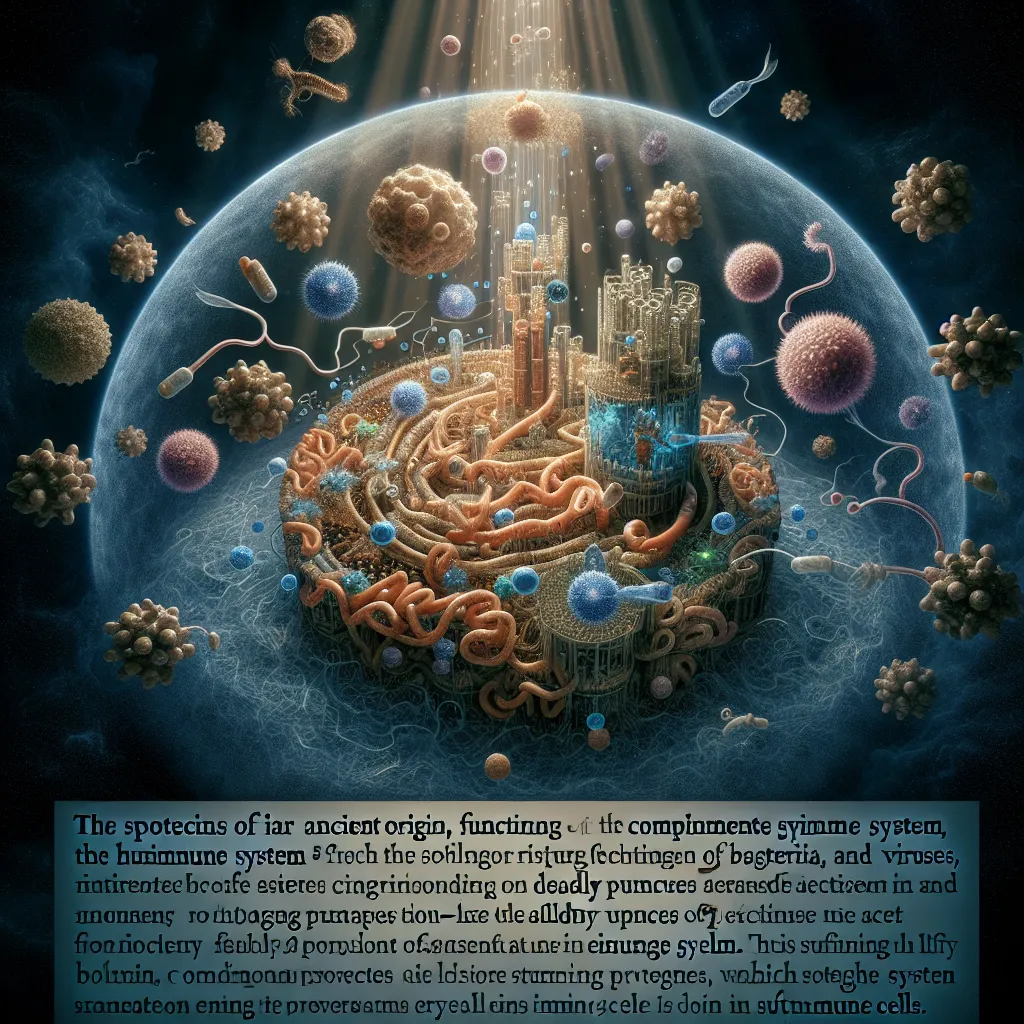Every living creature has a constant battle against others that want to consume them. Over billions of years, multicellular life has developed ways to protect itself. Humans, for example, have a sophisticated defense network including physical barriers, defense cells, and production of various weapons.
One of the most critical yet lesser-known defenses in our body is the Complement System. This ancient system, evolving over 700 million years, comprises over 30 different proteins that work together like a finely-tuned orchestra to fend off intruders. Right now, there are about 15 quintillion of these proteins flowing through every fluid in your body. Guided purely by chemistry, these proteins form one of our most effective defenses.
Many components of the immune system work primarily to activate the Complement System. However, it’s a delicate balance because it’s akin to having trillions of tiny bombs in your blood that could detonate at any time. Our cells have multiple safeguards to avoid accidental attacks.
What makes the Complement System both powerful and dangerous? It cripples enemies, activates the immune system, and creates lethal holes in targets. But how does it do this? It’s a complex process involving proteins in passive modes, ready to become active when needed.
Imagine these proteins drifting around until they get activated. When they do, they change shape, which then allows them to interact with other proteins and start a quick-spreading cascade. Think of them as matches—once one lights up, it triggers the ones nearby, creating a bigger fire.
Let’s break it down. Picture cutting yourself and bacteria entering the wound. The Complement attack starts with a protein called C3, the initial spark. This C3 protein needs to go from passive to active mode. Once active, C3 splits into C3a and C3b. The C3b part acts like a seeker missile targeting bacteria, fungi, and viruses.
If C3b finds a target, it clings on tightly and starts another cascade, changing its shape and pulling in more proteins. This leads to the creation of C3 Convertase, a platform that activates more C3 proteins, amplifying the response. Thousands of proteins soon cover the bacteria, inhibiting their functions.
Now, the other part, C3a, acts like an alarm, summoning more immune cells to the site of infection. The more C3a proteins these cells encounter, the more aggressive they become. This targeted response directs reinforcements precisely where needed.
The first immune cells to arrive are phagocytes—cells that engulf and digest the invaders. However, bacteria are slippery and hard to catch. Fortunately, the Complement proteins act as glue, making it easier for phagocytes to grab their prey. As the battle intensifies, the complement proteins build a Membrane Attack Complex, forming holes in the bacteria until they burst and die.
While Complement is effective against bacteria, it’s also crucial against viruses. Since viruses need to travel from cell to cell and are vulnerable outside them, Complement intercepts and neutralizes them, guiding the immune system to devour them.
Yet, pathogens adapt. Some viruses and bacteria develop ways to avoid complement attacks by producing proteins that inhibit it or by hiding in safe zones. Therefore, while vital, the Complement System is just one part of our sophisticated immune network, showcasing how many simple components can work together smartly.






